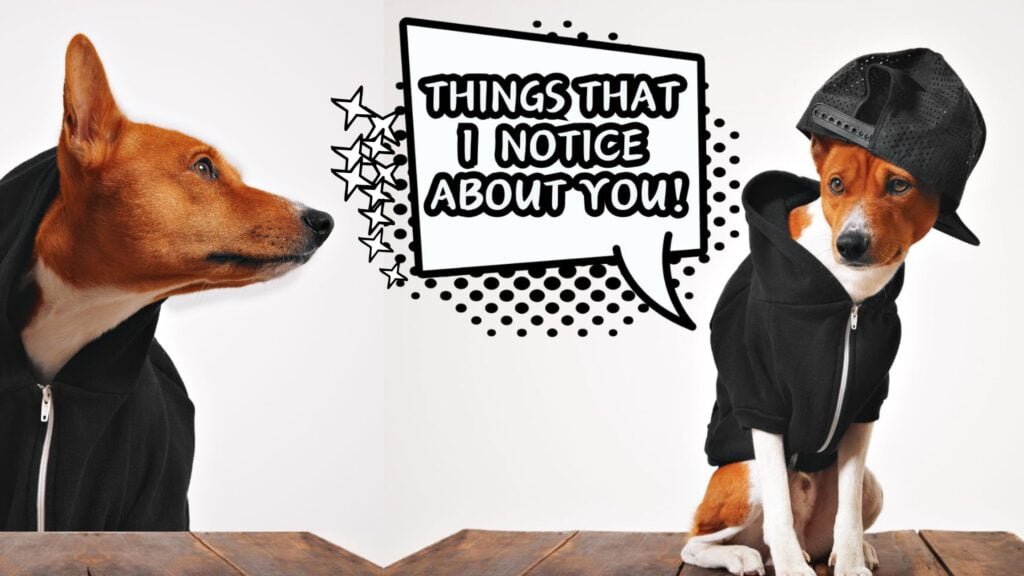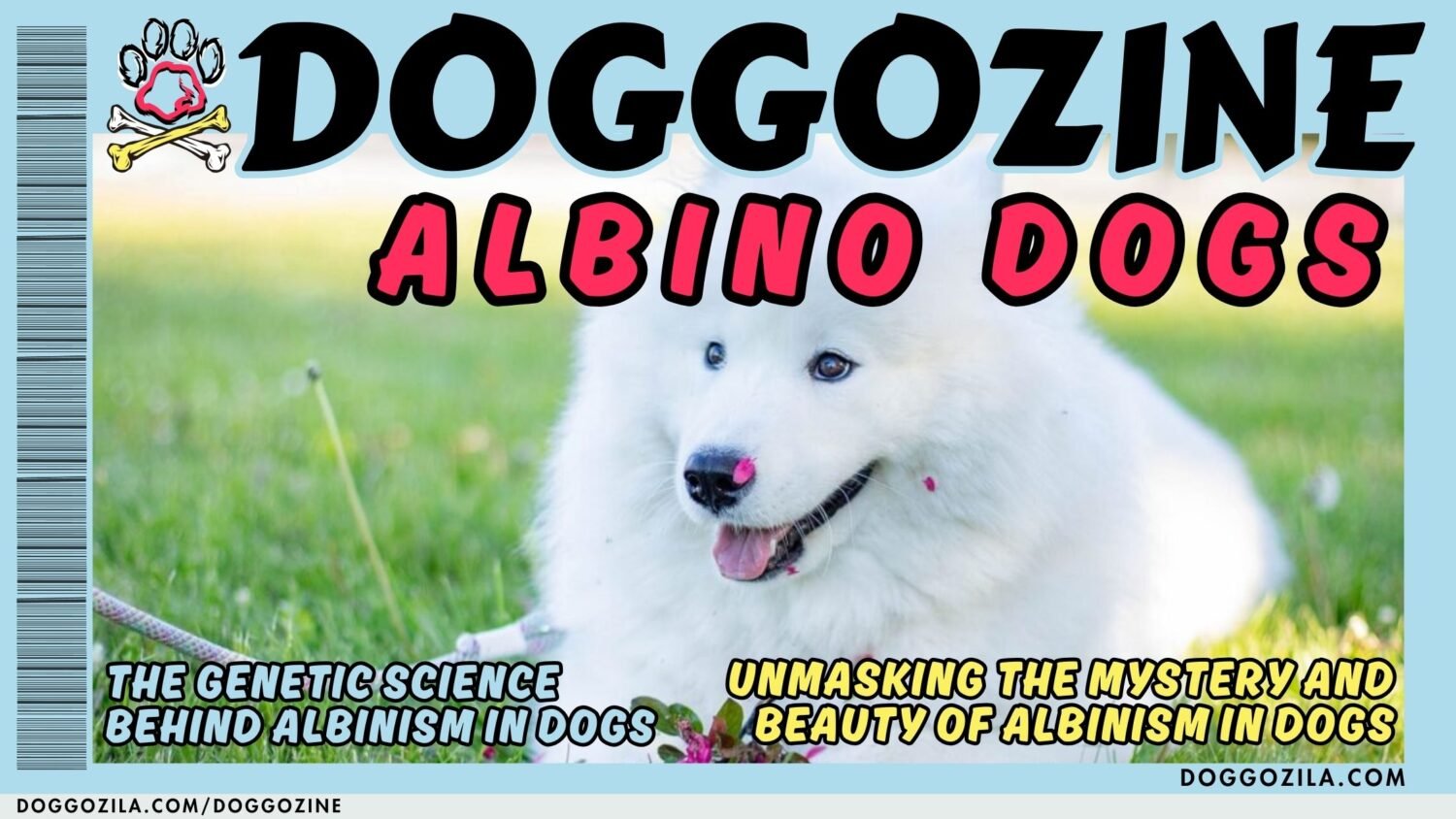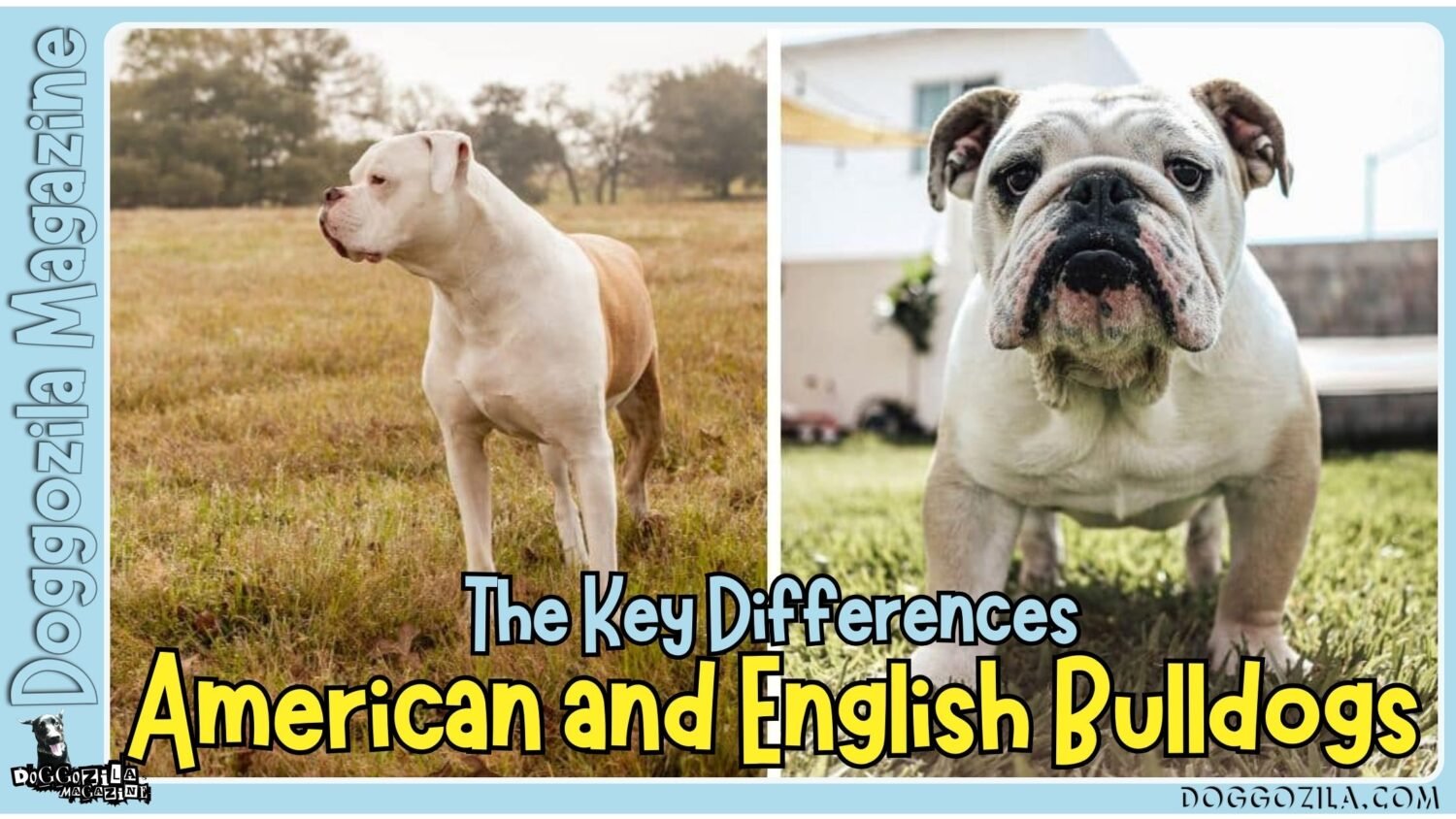The smell of chlorine and wet fur, the thunder of paws on wood, the suspended moment before a spectacular splash, dog diving competition represent pure, unbridled joy for water-loving dogs. This explosive sport transforms natural retrieving instincts into gravity-defying feats, where dogs sprint, leap, and fly with Olympic-level athleticism. From backyard retrievers to world-record whippets, dock diving celebrates every dog’s potential to become a champion.
What began as playful leaps from boat docks evolved into organized competition showcased it in 1997, igniting nationwide fascination. Today, this high-energy activity blends athleticism, trust, and watery fun into events that celebrate our dogs’ incredible capabilities while forging unforgettable bonds between species. Watching a dog fly toward its favorite toy with single-minded determination reminds us why we cherish these magnificent animals.
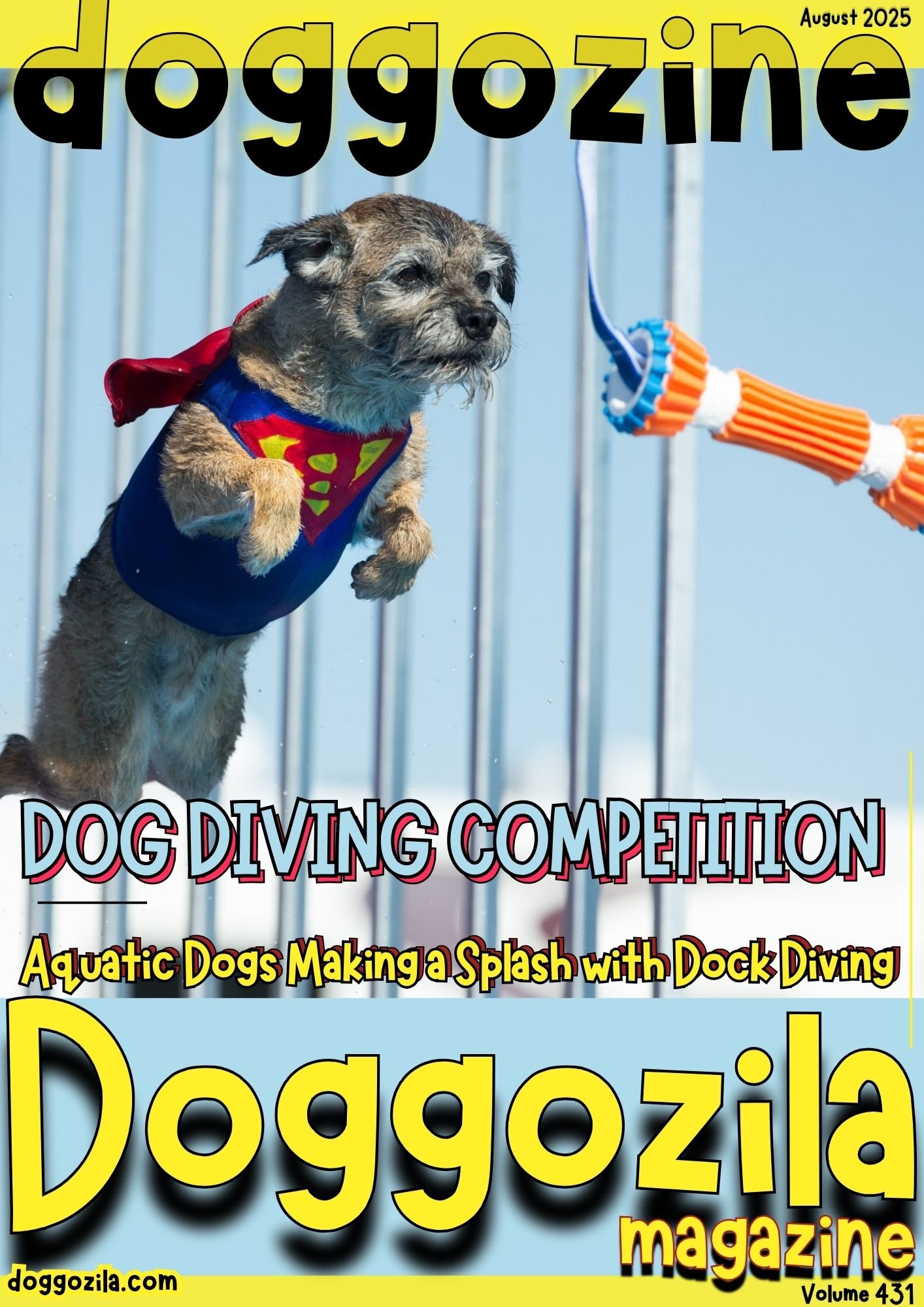
THE HEART-POUNDING AND COMPETITIVE DOCK DIVING: EVERY JUMP TELLS A STORY
Imagine a 40-foot runway ending at a shimmering pool, where dogs launch like furry missiles into the air, aiming for glory one splash at a time. Born in 1998 at Purina Farms when a Labrador named Scooter jumped 20 feet, this sport has evolved into a global phenomenon with professional leagues, ESPN coverage, and dedicated training facilities. Modern dock diving isn’t just a pastime; it’s a high-octane showcase of canine power, precision, and partnership.
The 2025 season alone saw champions like Posey, a Labrador from Michigan, clinching elite titles with jumps exceeding 30 feet, proving that heart matters more than pedigree. Whether your dog is a seasoned athlete or a weekend splasher, this sport offers tiers for all, including special heats for seniors and novices.
Breaking Down the Three Disciplines That Define the Sport
The heart of any dog diving competition lies in its three signature disciplines, each testing different athletic talents. Big Air remains the crowd favorite, where dogs chase a tossed toy across the water’s surface, their leaps measured from dock edge to tail-base splash point – a discipline where Whippets often out-jump bulkier breeds through sheer speed and technique.
Extreme Vertical transforms diving into an upward battle, with dogs springing like coiled springs to snatch suspended bumpers at dizzying heights, requiring explosive power and pinpoint accuracy. Meanwhile, Speed Retrieve turns the pool into a racetrack where milliseconds count, as dogs blast down the dock in a spray of water to grab their target.
These formats create endless dramatic moments, whether it’s a veteran Labrador beating personal bests or a rescue mutt discovering newfound confidence. The variety ensures every canine competitor finds their perfect challenge while giving audiences nonstop action.
Embracing Community Spirit On Pool Decks During Dog Diving Competition Seasons
Poolside events quickly become local traditions where neighbors, friends, and complete strangers unite over their love for canine athletes. Vendors set up colorful booths offering everything from high-protein treats to specialized life vests designed for dock diving training, ensuring pups stay safe while chasing their favorite toys.
Kids run alongside the docks, offering high-fives to muddy paws, while seasoned handlers swap stories about the quirky ways their dogs warm up before the big splash. Photography stations capture every epic flight and adorable belly flop, turning simple snapshots into cherished social media reels that inspire other owners to join the fun.
Water temperature is carefully monitored to keep muscles loose, and certified judges ensure scores reflect both distance jumped and style of entry, honoring the nuances of aquatic dogs performance. Local rescue groups often set up adoption tents, giving shy pups a chance to find forever homes as the excitement of a dog diving competition draws big crowds.
How Local Facilities Adapt To Host A Safe And Thrilling Dog Diving Competition Event
When a community center or dock owner decides to welcome a dog diving competition, they begin with a thorough inspection of the dock surface, layering on non-slip mats to prevent skids at takeoff. Pool depth is adjusted in collaboration with aquatic engineers to guarantee a minimum of four feet of water at the splash zone, protecting both webbed toes and enthusiastic leaps.
Handlers are briefed on leash removal zones and chill-out areas, where anxious pups can regroup under shaded tents before their next run. Certified swim instructors lead warm-up exercises that focus on gentle stretches, while judges review each contested rule like how far back a dog can sit on the dock before the launch cue. Professional photographers and videographers set up dynamic rigs, capturing both wide-angle jumps and slow-motion splashes to fuel local sports highlight reels.
Event coordinators incorporate first-aid stations for both humans and dogs, ensuring that sprains, strains, or overheating are treated promptly. Certified canine water safety experts volunteer to review each competitor’s swim style, making personalized suggestions from toy height to foam buoyancy. At the end of the day, feedback surveys reveal that the majority of attendees value the combination of safety protocols and high-energy vibes. This blend of professionalism and community warmth is what keeps enthusiasts coming back for more.
Engaging Vendors And Sponsors To Enhance Every Dog Diving Competition Experience
A thriving dog diving competition thrives on the energy vendors bring to the poolside promenade, setting up colorful tents laden with gourmet training treats and eco-friendly toys. Local pet photographers guarantee your pup’s record-breaking dive is immortalized in high resolution, ready for personalized calendars or pet food labels.
Dog nutritionists offer tasting samples of low-inflammation kibble, emphasizing ingredients like sweet potato and fish oil to keep joints healthy for those explosive jumps. Sponsors such as regional breweries even craft dog‐themed brews with optional nonalcoholic “pup ales” so handlers can toast their furry champions.
Charitable partners showcase rescue dogs that have been given confidence through dock diving training programs, creating heartwarming adoption success stories. Interactive booths teach crowd members how to read canine body language, helping everyone understand why a particular beloved Labrador hesitates before the dock edge.
🔑 Key Points: Incorporating cross-training elements like underwater treadmills further diversifies workouts and keeps routines interesting. By spotlighting these health perks on your blog, you’ll attract readers looking for canine fitness solutions.
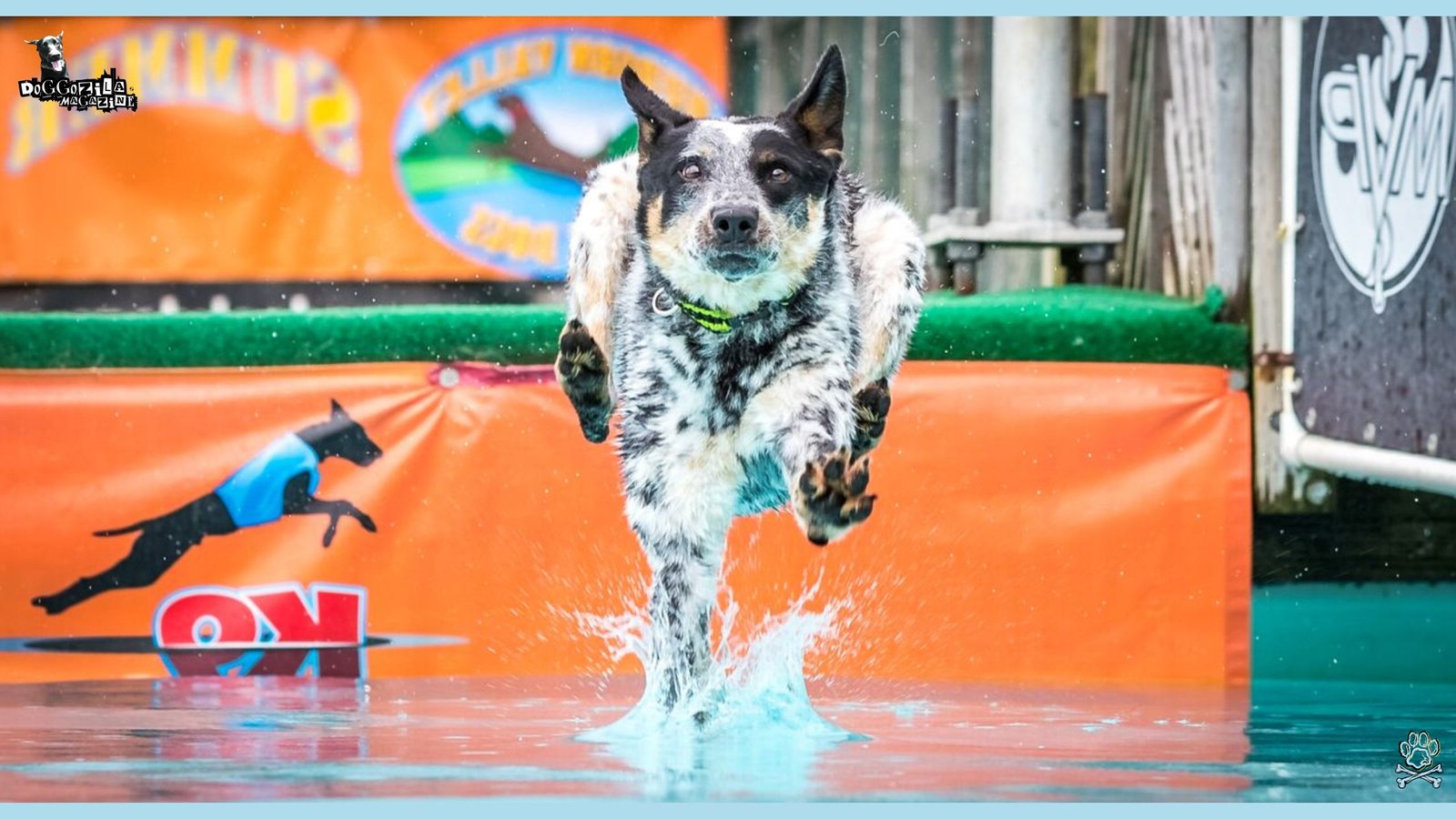
PREPARING YOUR DOG ATHLETE FOR THE BIG DAY: DOG DIVING COMPETITION TRAINING TIPS FOR EVERY BREED
Whether you own a high‐energy retriever or a compact terrier, building proper dock diving skills starts with mastering confidence in the water. You’ll want to introduce shallow water sessions that gradually progress to full pool dives, letting your dog learn that buoyancy feels good and safe.
Early training should emphasize recall drills with enthusiastic praise, teaching your dog to run the full length of the platform without hesitation. A consistent launch cue, often a verbal “ready, set, go” combined with a hand gesture helps create muscle memory, so your pup knows exactly when it’s time to leap.
Starting Young Pups With Confidence-Building Games Before A Dog Diving Competition
Introducing a puppy to the dock is all about positive first impressions, beginning with simple games like floating toy fetch in ankle-deep water. A young pup’s first experiences should feel like playtime, let them chase bubbles, paw at the water’s surface, and surface for treats tucked just beneath the splash zone.
Gradual exposure to the edge of the dock builds spatial awareness, so they learn to feel for solid ground before launching into deeper water. Pair each successful nip at the water with lavish praise, clicker rewards, or a brief rubber toy chase to reinforce the link between the pool and fun.
Consistency matters, aim for several five‐minute sessions per week rather than one marathon workout to keep their interest high and stress low. It’s also helpful to invite a confident older dog for demonstration dives, as puppies quickly learn through social cues and mimicry. Mixing in treadmill swims or shallow pond visits adds variety, preventing training monotony and boosting overall water confidence.
Adjusting Training Pace For Senior Dogs And Mixed Breeds
Not every dog athlete begins as a puppy sprinter, senior pets and mixed breeds often need an adjusted approach to avoid joint strain while still embracing the dock diving lifestyle. Start with shorter runways and shallower water to encourage comfortable, low-impact jumps that protect fragile hips and elbows.
Low-water interval swims can build endurance without adding weight stress, while hydrotherapy sessions help maintain muscle tone and range of motion. Incorporate gentle pull-back stretches on dry land to loosen hamstrings, followed by a few laps of walking in waist-deep water before each session.
Nutrition consultation is key, consider omega-3 supplements and controlled carbohydrate ratios to promote lean muscle gains without extra bulk. Monitor swimming sessions closely, allowing your senior dog frequent rest breaks and rewarding calm water entries, even a modest hop onto a shallow platform counts as progress.
Incorporating Fetch Toys And Scent Cues To Maximize Jump Drive
A dog’s drive to leap off the dock often hinges on the lure you use, so selecting the perfect toy can make all the difference in your training and competition runs. Start by testing different textures, from floating memory foam bumpers to rubber-rimmed tennis balls to see which ignites peak enthusiasm. Scent cues like a dab of anise or liver oil can further signal “game on,” making that perched moment on the dock as intense as a sprint to the finish.
Rotate a handful of toys during practice so your pup learns to stay focused on the object rather than anticipating one particular bumper shape. Use progressive distance drills, tossing toys incrementally farther backward as your dog’s confidence grows, then weave in scent-guided directional training in open water.
Once they understand both the visual and olfactory cues that a big jump is coming, muscle memory kicks in and reaction times shrink. Incorporating scent trails on the dock itself can help dogs gauge depth perception before launch, reducing hesitations that can cost centimeters in competition.
🔑 Key Points: The short daily sessions keep skills fresh. Teach your young athlete to see the leap not as a leap of faith, but as an invitation to play, launch, and splash toward a toy. Keep late-session fetch games gentle and low-impact, so your dog remains eager rather than worn out by repetition.
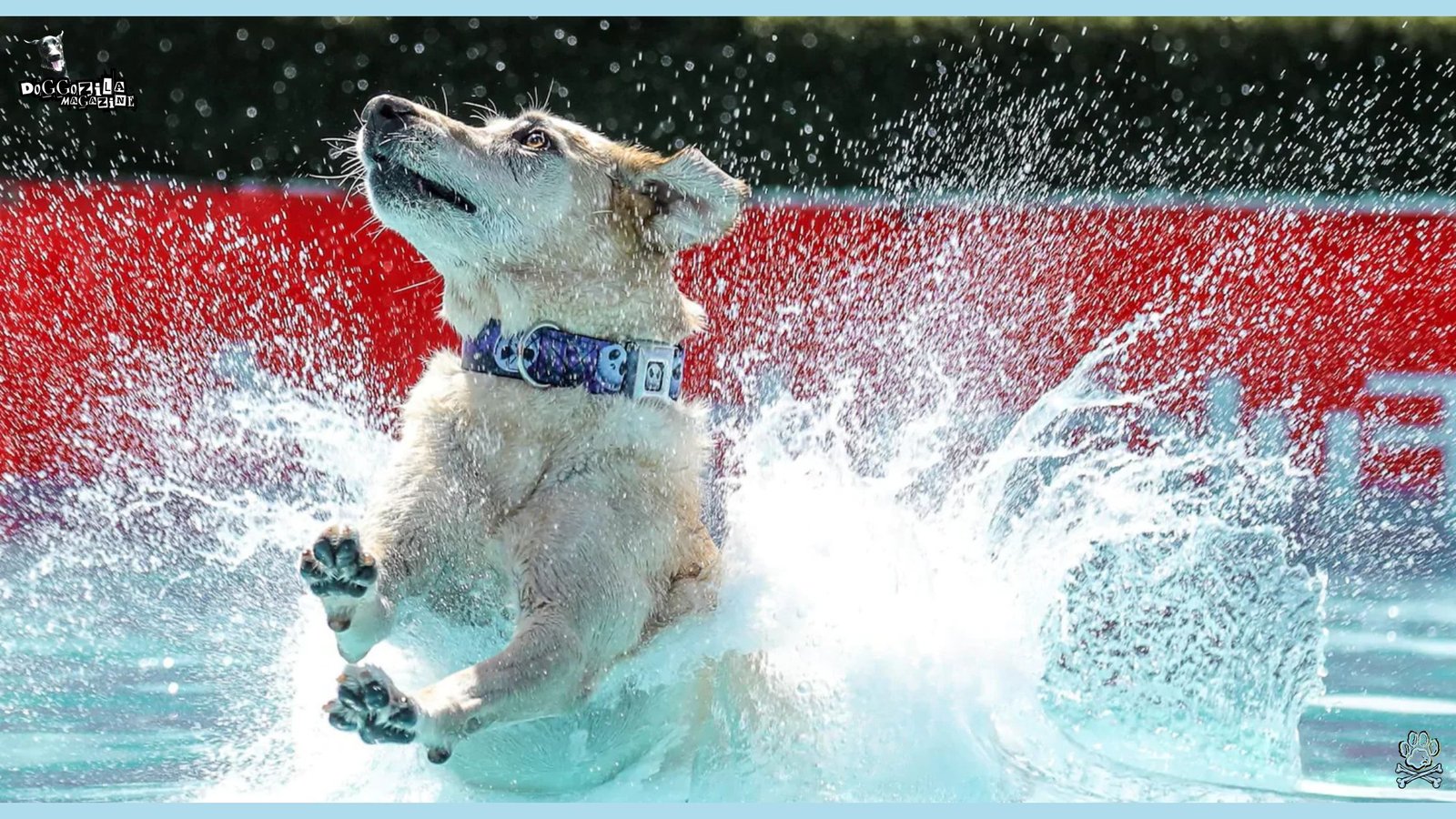
WHY MIXED BREEDS CAN SHINE IN A DOG DIVING COMPETITION AND STEAL THE SHOW
Mixed-breed dogs bring unexpected athletic versatility to the world of dock diving, blending the endurance of one lineage with the agility of another. Their genetic diversity often leads to a unique combination of power and playfulness that can outpace purebreds in certain jumps. When handlers tap into a mixed-breed’s natural curiosity and reward-driven mindset, training sessions turn into discovery games rather than routine drills.
At local events and major trials alike, mixed-breed competitors consistently land in the top ranks during air retrieve, distance jump, and hydro dash disciplines. These success stories prove that if your dog loves water and fetch more than any specific pedigree, the dock becomes a stage for unlimited stardom.
Related Article Recommendation: Dog Sports History!
Celebrating Diversity In Breed Backgrounds At Mixed-Dog Diving Competitions
Events tailored for mixed-breed participants highlight the beauty of canine variety by creating open classes where looks don’t determine lane assignments. You’ll find everything from athletic terrier crosses to sturdy shepherd mixes lining up for their first splash, each one bringing a unique running style and jump technique. Handlers share cross-discipline training hacks like mixing agility weave poles with ramp hurdles to harness a hybrid dog’s multi-sport strengths.
The energy is electric as each dog approaches the dock with a signature gait influenced by its blend of ancestors, creating a dynamic spectacle for judges and spectators. Even the toy selection reflects that diversity, combining lightweight wind-catchers for lean builds and buoyant bumpers for more muscular frames.
When a surprising underdog unseats a crowd favorite, mixed-breed success goes viral, inspiring others to discover the dock diving community. Judges often note that these athletes demonstrate less burnout and more spontaneity, making for memorable performances. Above all, mixed-breed diving meets celebrate that every dog, irrespective of lineage, has the potential to defy expectations and make waves.
Feeding And Nutrition Hacks That Fuel A Mixed Breed Gearing Up For Dock Diving
A well-balanced dog diet is the cornerstone of peak performance, and mixed breeds often benefit from customized feeding protocols that address diverse nutritional needs. Protein quality matters most, so choose whole-meat ingredients like salmon or turkey to support lean muscle repair after high-intensity sprints. Complex carbohydrates like sweet potatoes, peas, or quinoa offer sustained energy without the blood sugar spikes that can lead to mid-run fatigue.
Incorporating joint-support supplements such as glucosamine and chondroitin helps maintain mobility for the sudden explosive takeoffs dock diving demands. For breeds prone to weight gain, portion control with timed feeding sessions prevents extra bulk that could slow down runway speed.
Fresh greens and antioxidant-rich berries aid recovery by reducing inflammation, keeping muscles supple for subsequent training days. Many handlers swear by a pre-splash snack of cubed apple or carrot sticks, providing a quick, low-fat pick-me-up that doesn’t upset stomachs. Daily hydration checks ensure your dog drinks enough before stepping onto the dock, especially on hot festival days.
Building Trust And Recall Before The Dive In A Dog Diving Competition Environment
A strong recall command is essential for both safety and scoring, since most events require dogs to return across the dock or to bring the toy back past a designated line. Start in quiet environments, calling your dog back with high-value treats or personal praise, then gradually introduce poolside distractions like cheering crowds or splashing water.
Reward not just arrival, but smooth dock turns and focus on the toy, teaching your dog that efficient retrieval crowds applause and better scores. Practice “stop and wait” cues at the edge of the dock to cement discipline, making sure they learn to sit or stand still until you release them for the jump.
Hand signals combined with verbal commands build a robust recall that holds even when judges and spectators are watching. During training, vary the toy release angle and distance to prevent pattern memorization, ensuring your pup responds reliably to any launching scenario.
🔑 Key Points: Above all, mixed-breed diving meets celebrate that every dog, irrespective of lineage, has the potential to defy expectations and make waves. Fine-tuning meals to your mixed-breed’s unique metabolism makes all the difference between a good jump and a record-breaking launch.
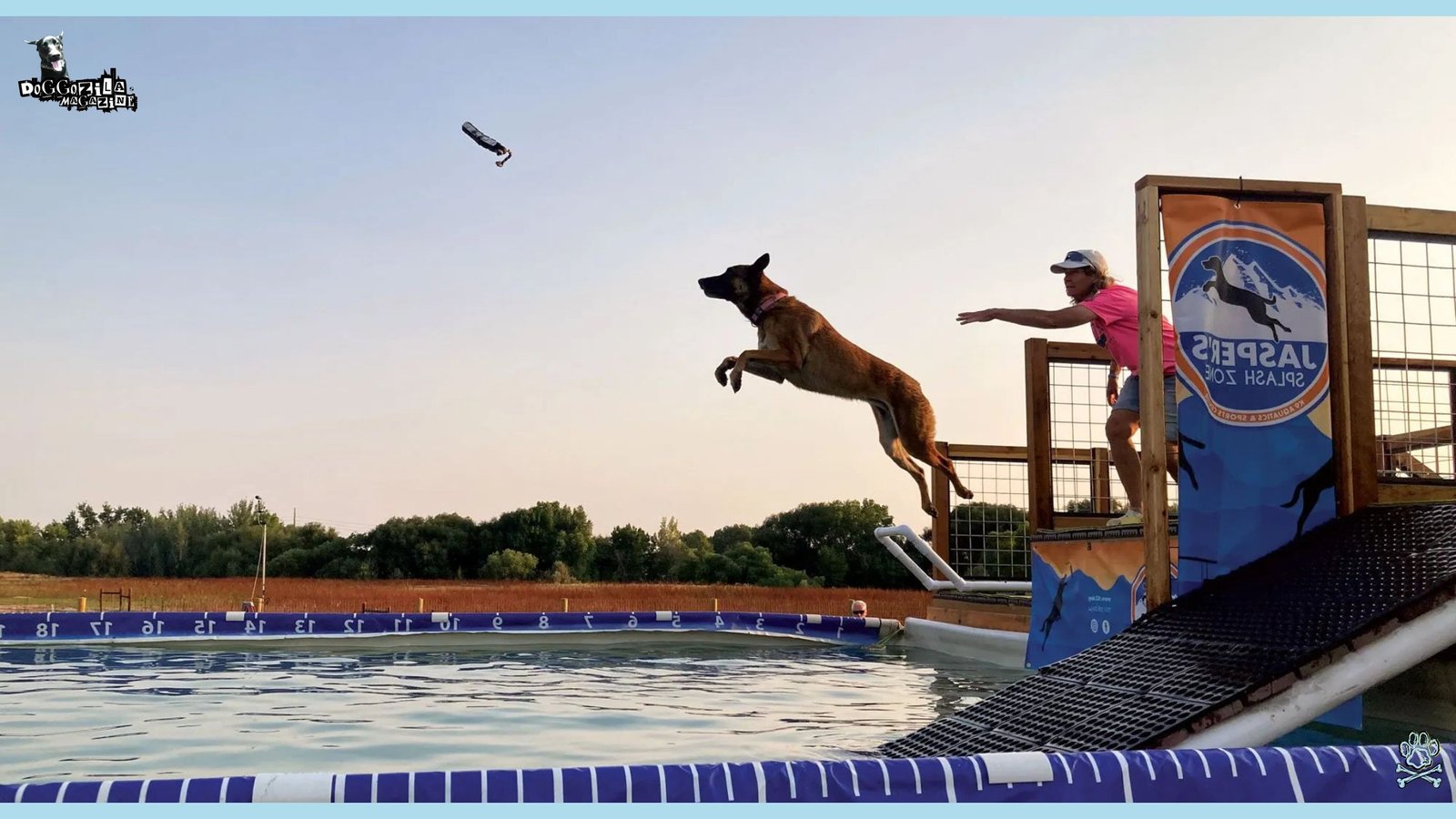
FROM DISTANCE JUMPS TO AIR RETRIEVE: EXPLORING DISCIPLINES WITHIN A DOG DIVING COMPETITION CIRCUIT
Dog diving competitions have evolved into multi-discipline festivals where each event tests different athletic and technical skills. The distance jump measures how far a dog can propel its body from the dock edge, challenging both speed and takeoff angle. In air retrieve, handlers incorporate an aerial twist, throwing toys behind the dog’s back so it lunges, spins, and catches mid-air before splashing down.
Hydro dash races combine swimming speed with precision docks, where dogs navigate floating buoys before lunging for a toy. Many leagues even add freestyle events, where creativity and showmanship score bonus points alongside raw athletic metrics. Understanding each discipline’s nuances helps handlers tailor training to maximize splashes, style, and speed throughout the season.
Mastering The Distance Jump With Speed Training And Pool Etiquette
Success in the distance jump often hinges on runway speed, so handlers incorporate progressive sprint intensives into training regimens. Interval training like alternating between full-speed runs and short rest breaks builds both muscle memory and cardiovascular endurance.
Appropriate runway footing, from traction mats to grip-enhancing sprays, ensures your dog can launch confidently without slipping at the last step. Alongside speed, pool etiquette drills teach pups to exit quickly via side ramps, clearing the lane for subsequent competitors. Hydration stations placed near the dock encourage timely water breaks, preventing overheating that could derail a record attempt.
Air Retrieve Tactics And Toy Selection For Maximum Splash In A Dog Diving Competition Setting
Unlike pure distance events, air retrieve demands a seamless blend of aerial agility and aquajet propulsion, pushing pups to rotate mid-flight for a perfect catch. Handlers often practice behind-the-back throws in dry land drills first, building muscle memory before moving to the dock edge.
Toy selection becomes critical here, heavier bumpers offer more inertia but require stronger neck support, while lighter frisbee-style discs fly farther but risk slipping from sloppy paws. Some competitors swear by hybrid foam-rubber hybrids that float right at water level, giving dogs a clear visual and tactile target at splash entry.
The launch cue itself can be paired with a subtle backward step, helping dogs instinctively lift their hips for that signature belly-up entry. Judges award bonus points for mid-air catches without toy drops, so handlers schedule retriever-centric games alongside jump practice. Most training experts recommend gradual toy‐height increases, starting at dock level before elevating plunges up to a foot above the deck.
How Judges Score Technique And Form Across Events For Canine Aquatics Champions
Scoring in dog diving competitions balances objective measures like distance and time with subjective evaluations of technique, entry form, and overall enthusiasm. Each discipline has its own criteria, distance jumps rely strictly on the furthest paw entry point, while air retrieve includes bonus points for smooth mid-air catches and stylish water entry. In hydro dash, time is the primary factor, but penalties apply for trimming buoys or missing retrieval lines before the finish.
Judges use calibrated laser rangefinders and digital timers to eliminate human error, and multiple camera angles capture entries for tie-breaking instant reviews. Style judges look for clean dives that minimize splash height, rewarding streamlined belly entries over chaotic cannonballs. Most competitions also include a sportsmanship award to recognize handlers and pups who exemplify positive attitudes, teamwork, and community support.
Understanding how these layers of scoring interplay helps handlers strategize which disciplines to emphasize in training. With every competition video archived online, teams can study top performers and glean tips on launch angles, body positioning, and mid-air tucks. Ultimately, consistent performance across multiple categories often outshines isolated record-breaking feats, crowning the most versatile canine aquatics champions.
🔑 Key Points: Timing is everything, an overly enthusiastic step can send your dog hurdling too early, sacrificing precision for panache. Judges measure from dock edge to the point where the dog’s paw first contacts the water, so handlers focus on ideal takeoff spots rather than chasing max muscle jumps.
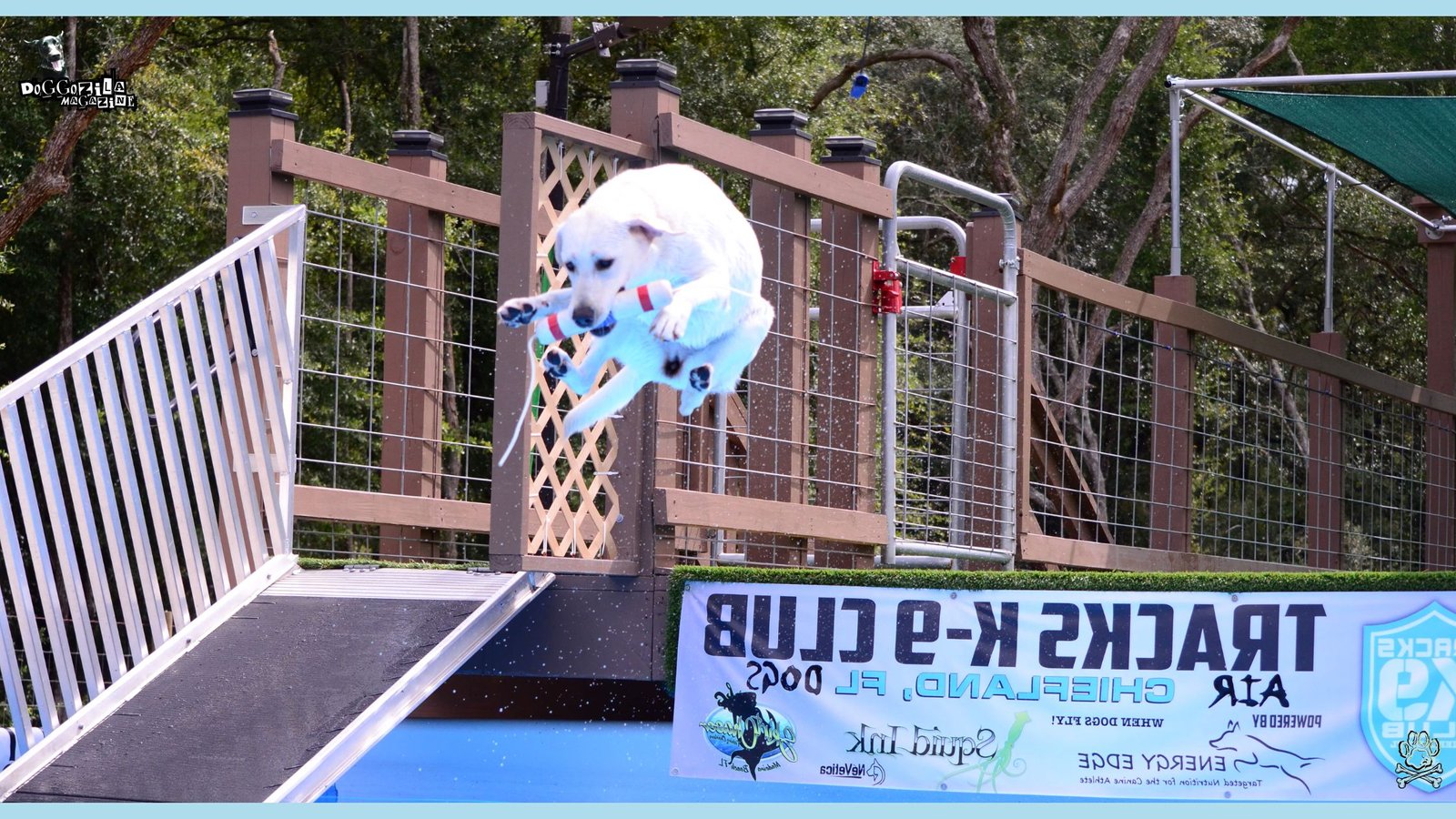
BEHIND THE SCENES OF THE NATIONAL DOG DIVING COMPETITION: STORIES FROM HANDLERS AND THEIR PUPS
National-level dock diving events bring together an eclectic cast of canine athletes from retrievers and spaniels to terriers and mixes, each with their own path to the podium. Behind every record-setting distance is a story of early morning training sessions, cross-country travel, and last-minute adjustments to pool chemistry. Handlers swap anecdotes about how a timid rescue dog found confidence after its first cannonball splash, or how a champion Belgian Malinois earned its title through a makeshift backyard dive pool.
Vendors, volunteers, and judges converge behind the scenes to fine-tune lane assignments and calibrate equipment for fair, consistent scoring. Media crews capture emotional highlights, from tearful first-time competitors to seasoned veterans breaking their personal best, turning this dog aquatic sport into must-watch summer programming.
Diary Of A Handler Preparing For A High-Stakes Dog Diving Competition Finale
Kara remembers her Border Collie mix, Scout, barking with excitement at dawn before their biggest event yet, a clear sign that confidence had replaced earlier poolside anxiety. They drove three states over, arriving at the venue in the cool morning light to acclimate Scout to the dock’s surface and surrounding crowds.
Kara taped her training notes to her clipboard like markers for stride length, launch cue timing, and toy height adjustments, so she could reference them between runs under the bleachers. Their practice jumps generated smiles from passersby, many of whom offered tips on weather patterns affecting water temperature or wind direction that could push light toys off course.
They tweaked Scout’s favorite bumper height by an inch, a seemingly minor shift that proved crucial when the dog hit the water with perfect entry form. Judges flipped through score sheets, checking consistency between calibrated lasers and video timers, while Kara focused on maintaining Scout’s calm energy.
When their heat was called, she gave a final whispered cue, “Go play,” and watched her friend soar. That leap not only broke Scout’s personal record but also earned unanimous applause from hundreds of onlookers. After the competition, Kara spent an hour hugging supporters and trading training hack pamphlets, knowing that every story shared would inspire someone else’s dive.
Pre-Event Rituals And Superstitions That Add Ritualistic Charm To Dog Sports
From color-coded bandanas believed to boost canine confidence to ritual foot baths scented with eucalyptus, handlers embrace rituals as part of their pre-dive routine. Some swear by playing a specific playlist, often upbeat reggae or classic rock to energize both handler and dog before stepping onto the dock. Others tie a lucky ribbon around their dog’s collar or wear matching team jerseys for a sense of unity.
A handful of competitors carry a personal charm like a smooth river stone or a feather found on a memorable hike to calm jittery nerves. Whether rooted in tradition or pure good luck, these rituals create bonds that extend beyond the competition, weaving shared memories into each successful splash. At some senior events, dogs line up for a communal group walk around the facility, offering a calm counterpoint to the adrenaline of race starts.
Judges note that while these touches don’t score points, they set the tone, often turning an intimidating atmosphere into one of camaraderie. Photographers love to capture these behind-the-scenes moments, turning simple rituals into heartwarming social media stories. Ultimately, it’s the magical blend of routine, superstition, and genuine affection that transforms a dog diving competition into a tale of trust and triumph.
The Logistics Of Travel, Lodging, And Post-Event Recovery For Canine Athletes
Competing at a national level means juggling plane tickets, hotel reservations, and poolside practice all in one weekend, making logistical planning as crucial as training itself. Many handlers prefer pet-friendly lodging near venues, ensuring late-night munchies or unexpected skin irritation visits can be addressed quickly. Climate control is essential, some breeds overheat easily, so portable fans and cooling vests become standard in travel kits.
Post-event recovery zones often feature inflatable kiddie pools and shady tents where dogs can unwind with gentle aqua-therapy sessions. Handlers use cold-water soaks to reduce muscle inflammation, followed by light massage to relieve tension in shoulders and haunches. Car rides home double as nap time, as most pups will happily snooze after an action-packed day of socializing, cheering, and dock performances.
Many competitors swear by electrolyte-infused water mixes that help maintain optimal hydration after multiple sprints across the platform. Advanced teams even book local canine chiropractors for a post-tournament realignment, ensuring that every vertebra is ready for the next season. Ultimately, smooth travel and thoughtful aftercare keep both handlers and their four-legged coaches healthy and eager for the racetrack splash zone.
🔑 Key Points: These high-profile gatherings set the standard for event organization and community growth. Studying their operational blueprint can help local clubs elevate their own meets and streamline logistics to attract larger crowds.
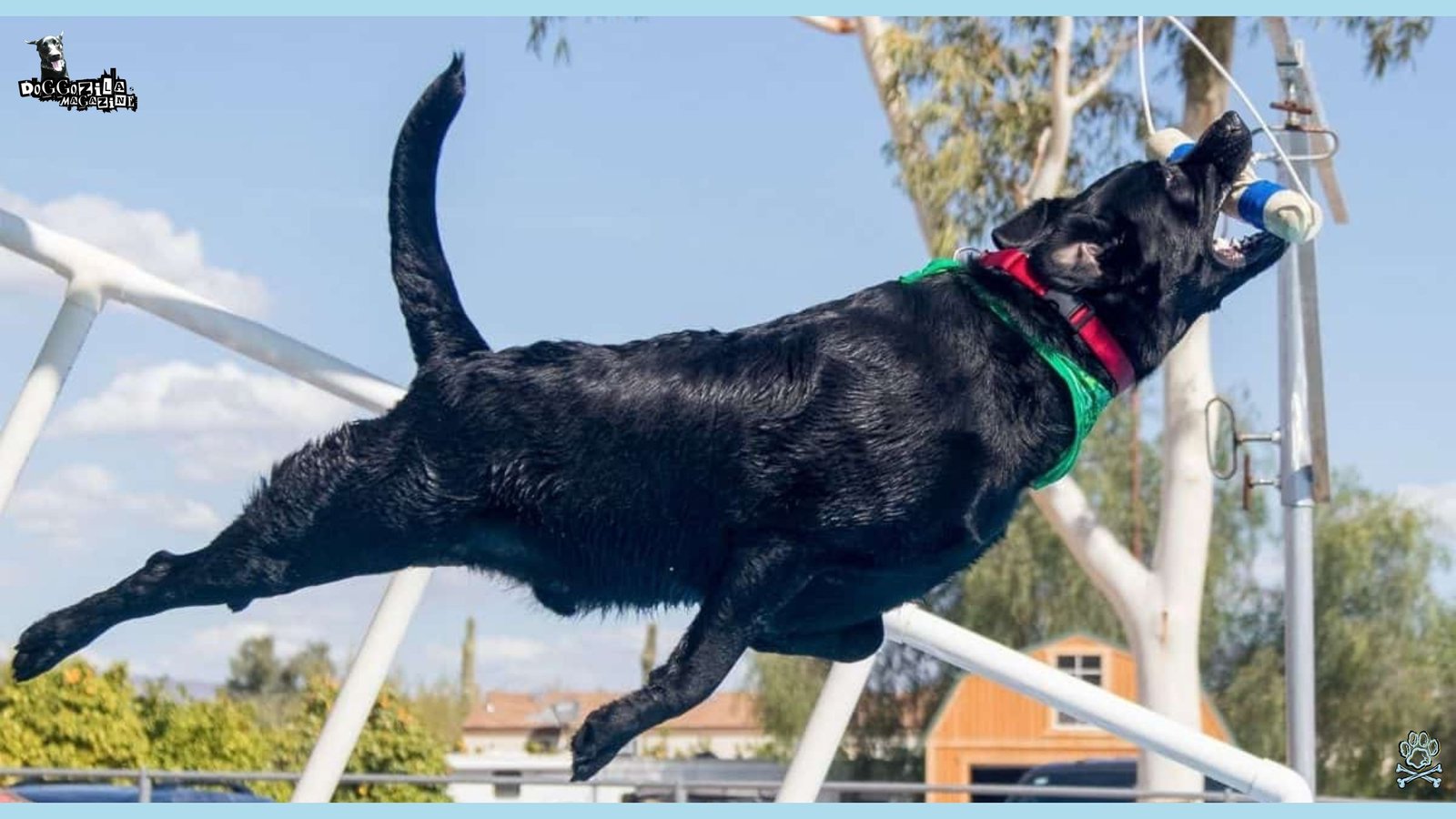
THE RISE OF DOCK DIVING AS AN INCLUSIVE AQUATIC SPORT IN SUMMER FESTIVALS
Once a niche promotion for a pet food brand, dock diving has exploded into a mainstream dog sport that welcomes any breed, size, or mix. Festivals across the country now feature dedicated canine aquatics zones, complete with portable pools, certified lifeguards, and stadium seating. Families plan vacation weekends around these events, blending picnics with paddle sessions and puppy play zones.
Nonprofits use the crowd draw to raise awareness for adoption programs, offering adoption trials right next to the competition docks. With social media reels showcasing record-breaking leaps, new enthusiasts flock to local clubs, eager to try their dog’s first cannonball.
Upcoming Dock Diving Events at Dock Dogs!
Tracing The History From Promotional Dock Jumping Promos To Professional Canine Aquatics Leagues
Two decades ago, a pet food manufacturer staged a one-time dock jumping demo to showcase a formula’s muscle-building benefits, not imagining a lasting legacy would follow. The novelty drew crowds who cheered every canine leap, prompting local parks departments to adopt the sport for summer fairs and pet expos.
As participating teams grew more competitive, rulebooks solidified around distance, style, and safety protocols, birthing governing bodies like NADD (North America Diving Dogs) and DockDogs Worldwide. By the early 2000s, national titles carried prize purses, sponsor partnerships, and televised coverage, elevating dog diving competition from backyard fun to elite sport.
Research into dog biomechanics followed, with universities studying launch angles, muscle fiber composition, and joint impacts to optimize both performance and animal welfare. Today, academic papers on dock diving physiology inform best practices in training, fueling faster leaps and cleaner water entries.
How Summer Dog Events Incorporate Poolside Activities And Family-Friendly Zones?
Modern dock diving festivals aren’t just for competitors, they’re family celebrations complete with dog-friendly splash pads, agility playgrounds, and bone-throw contests for younger pups. Children’s areas feature face painting, bounce houses, and interactive dog behavior demos, turning every corner of the venue into a chance for hands-on learning.
Food trucks line the entrance, offering pup-friendly frozen treats alongside human favorites like gourmet sliders and veggie wraps. Vendor villages showcase the latest in pet tech, from GPS collars to fitness trackers that map swim patterns in real time.
Outdoor yoga classes invite handlers and their dogs to stretch together, emphasizing balance and core strength critical for explosive takeoffs. Even local artists set up live painting stations, capturing each fearless dive in watercolor or digital media. Puppy meet-and-greets raise funds for area shelters, creating immediate adoption opportunities for eager families.
Sponsorship Trends And The Surge Of Eco-Friendly Dog Sporting Gear
Environmental consciousness has entered the dock diving arena, prompting sponsors to offer biodegradable toys made from recycled ocean plastics and plant-based foams. Water stations feature filtered systems that refill handlers’ reusable bottles and keep pool water pristine without harsh chemicals. Brands tout solar-powered scoreboards and LED lane markers that consume minimal energy during evening runs.
Local “green paws” initiatives partner with leagues to reduce single-use plastics, swapping paper programs for downloadable digital schedules. Many event organizers now encourage carpooling or rideshare promotions to cut down on carbon footprints, even offering incentive badges for teams that travel sustainably. Apparel sponsors release color-fast, moisture-wicking jerseys made from bamboo blends, reducing both landfill waste and handler overheating.
Some leagues have introduced recycling contests, where guests can win free entry to next season’s dock diving competition by collecting the most recyclables. This shift toward sustainability underscores the broader trend of eco-responsibility in pet sports, proving that protecting the planet can be just as rewarding as breaking personal bests.
🔑 Key Points: International championships now welcome teams from Europe and Asia, demonstrating how this turn into a global dog aquatics movement. At sunset, festival DJs spin upbeat playlists as handlers cool off in twilight pool sides, proving dock diving is as much about community fun as it is about records and ribbons.
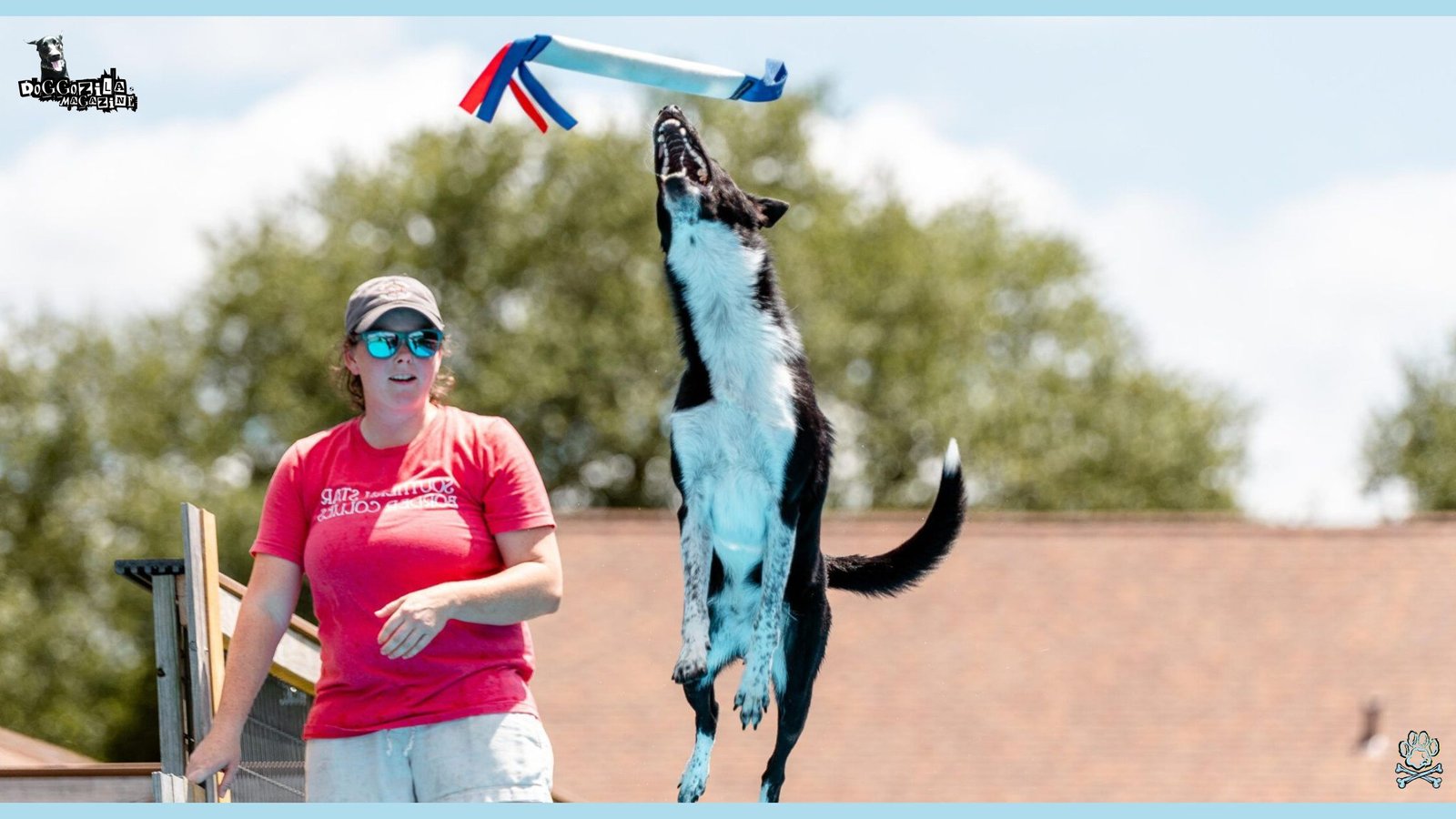
BUILDING CONFIDENCE AND SAFETY: ESSENTIAL GEAR AND POOL SETUP FOR DOG WATER ATHLETES
Before your canine partner takes its first competitive leap, a thorough gear and facility checklist builds both confidence and safety. You’ll need a non-slip dock surface and side ramps that let even novice swimmers exit easily after each run. Handlers should carry waterproof first-aid kits stocked for minor paw cuts or muscle strains, as well as cooling towels for hot summer days at pet expos. Life vests designed for water sports for dogs offer buoyancy without restricting natural stride mechanics, ensuring every dive starts with secure support.
Finally, calibrating pool depth to at least four feet under the dock edge and monitoring water temperature between 70°F and 78°F reduces strain on joints, making every training session and dog diving competition day a secure environment.
Choosing The Right Life Vest And Leash For Progressive Dog Diving Competition Events
Finding the perfect life vest means balancing buoyancy panels with flexible neoprene that moves with your dog’s shoulders and hips. Many manufacturers now offer dog training gear featuring mesh side panels for ventilation, preventing overheating when your pup waits in line under a tent. Quick-release buckles and adjustable straps allow for a custom fit that won’t slide up during a powerful dive, and the integrated grab handle on top makes water extractions fast and stress-free.
Some brands even include reflective piping so your dog is visible on overcast days or evening events near you. When pairing a leash, choose one with a bungee section to absorb sudden jolts as your dog launches, while a heavy-duty snap hook ensures the clip won’t fail during pre-splash warm-ups. Avoid chains or retractable leads that can catch on grommets or dock hardware, risking leash breakage and potential injury.
For rainy or dewy mornings, non-slip glove liners help you maintain a solid grip on bumpers and leads without chafing your skin. Many handlers attend regional dog diving competition expos to test multiple vest models side by side, observing how different designs affect stride length and muscle fatigue. Investing in high-quality gear from trusted pet sports vendors pays dividends in handler confidence and your dog’s willingness to push for that extra inch on the leaderboard.
Pool Design, Water Temperature, And Ramp Angles That Prevent Injuries On The Dock
The ideal pool for canine aquatics features a four-foot-deep landing zone directly under the dock, which prevents belly or paw injuries from accidental bottom strikes. Shallow entry ramps placed at both ends let dogs re-enter the water without jumping back in, cutting down on joint stress after repeated runs. Surface materials matter too, a composite dock with interlocking non-slip mats reduces splash-related skids and offers predictable traction when wet.
Handlers and organizers should monitor water temperature closely, keeping it within a 70°F to 78°F window that’s warm enough to loosen muscles but cool enough to prevent overheating during back-to-back heats. Seasonal pool covers help maintain consistent temperatures in early spring or late fall events, eliminating surprises in water chemistry.
Drainage systems should cycle filtered water every 15 minutes to keep pH levels balanced and avoid chlorine spikes that can irritate eyes and skin. Lighting rigs positioned at a 45-degree angle illuminate the runway and water surface for dusk competitions, reducing shadows that can spook sensitive pups. Poolside docks often incorporate a slight incline toward the water, so dogs learn to lean forward naturally before launch, improving both distance and entry form.
Maintaining Water Purity And Framing Emergency Care For Dog Diving Competition Safety
Keeping water pristine during a full day of dog diving competitions requires a multi-tiered filtration system and frequent testing of free chlorine and pH levels. Many venues employ cartridge filters rated for high volumes, supplemented by ultraviolet sterilizers that neutralize bacteria without additional chemicals. Handlers noticing red-rimmed eyes or dry noses in their dogs after practice jumps know to flag the water chemistry team for retesting.
A dedicated first-aid tent staffed by dog care professionals should offer everything from antiseptic sprays to cold packs for muscle inflammations, ensuring minor mishaps never sideline an athlete. Quick-detach collars and harnesses simplify emergency water extractions, while pre-marked off-dock staging areas keep leashes untangled and handlers ready to respond.
Event organizers can even host short “safety demos” before each round, teaching attendees CPR basics and demonstrating ideal ways to support a stressed or injured dog. For regions prone to summer heatwaves, misting stations and shaded recovery pools provide immediate relief from overheating. Post-event water audits often reveal surprisingly low contaminant levels when these protocols are followed, demonstrating that large-scale festivals can be both fun and hygienic.
🔑 Key Points: By combining thoughtful pool architecture with precise environmental control, handlers create a setting where every dog can focus on performance instead of potential hazards. Layered safety measures and clear emergency workflows build trust among handlers, judges, and new spectators.
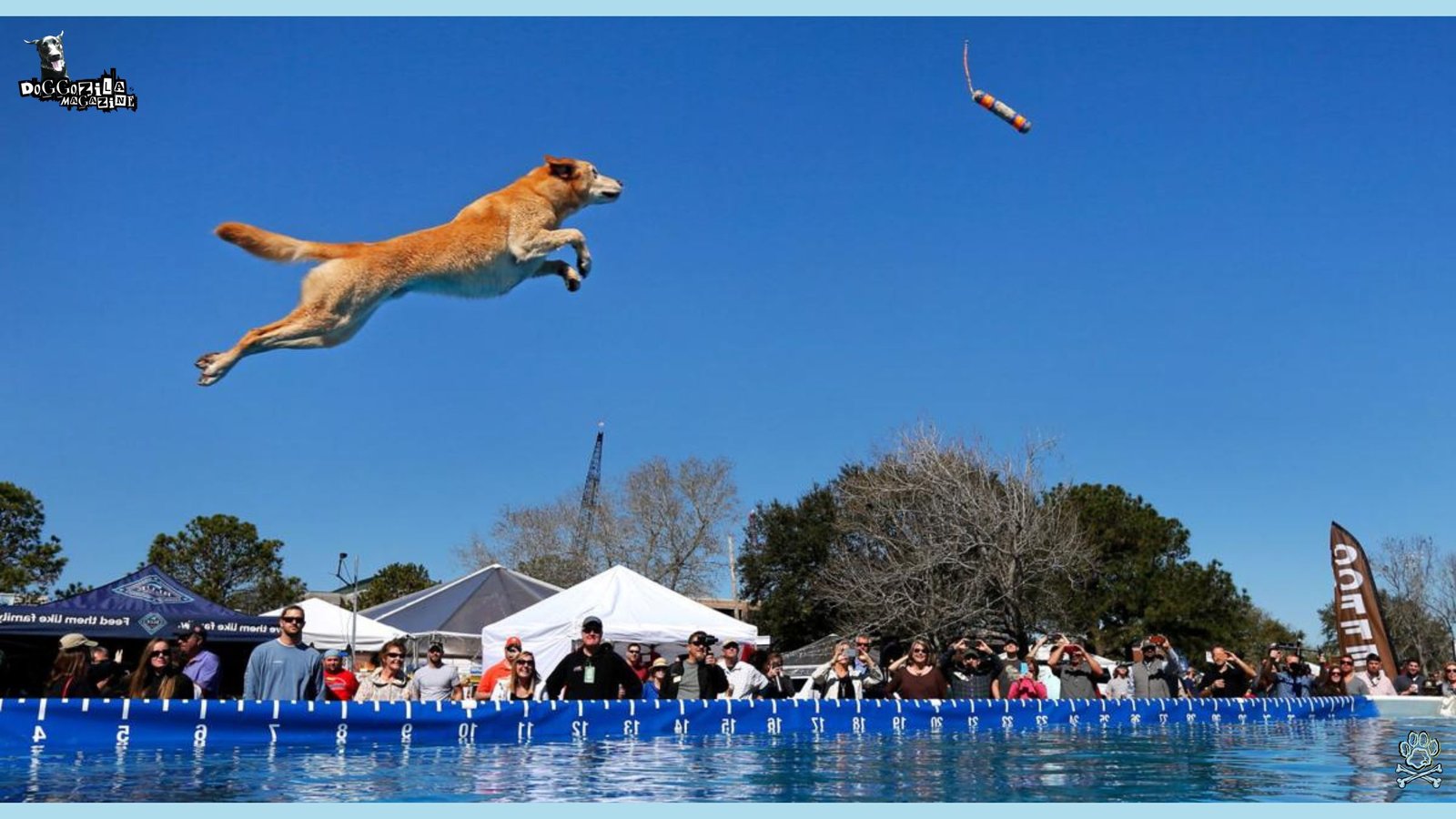
MONITORING DOG HEART RATE AND FITNESS LEVELS FOR DOG DIVING COMPETITION READINESS
As dog athletes push themselves through dock diving circuits, monitoring vital signs keeps both performance and welfare in focus. Body condition scoring and periodic muscle girth measurements help assess whether your dog is gaining unnecessary bulk or losing required lean mass, critical information for both sprint-style distance jumps and endurance-based dock diving competitions. Nutrition and supplement adjustments often follow these fitness assessments, ensuring diet supports both recovery and explosive power.
Seasonal fitness tests including timed laps in waist-deep water and runway sprint drills, give a holistic picture of cardiovascular and musculoskeletal readiness. Portable veterinary-grade heart rate monitors designed for dogs slide comfortably around the chest, tracking beats per minute during both warm-ups and post-dive recovery. By using data-driven training methods, teams elevate every rebound, splash, and finish line to a carefully managed performance milestone.
Related Article Recommendation: Heart Failure and Heart Care for Dogs!
Crafting A Community Legacy Beyond The Splash Zone: Connecting With Dog Lovers Year-Round
Building a vibrant dog diving community doesn’t stop when the final ribbon is awarded, it extends into year-round engagement that cements friendships and fosters shared growth. Monthly meetups at local ponds or indoor pools give new handlers low-pressure opportunities to learn dock diving basics from seasoned veterans.
Online forums and closed social media groups let members swap training videos, share “dock diving near me” tips, and announce pet expo appearances, creating a digital hub for continuous support. Workshops led by canine behaviorists and sports nutritionists keep everyone up-to-date on the latest research, from muscle recovery techniques to breed-specific training hacks.
Planning joint community service days like beach clean-ups followed by splash parties, reinforces both environmental responsibility and team camaraderie. Over time, these activities weave a tapestry of experiences that elevate dog diving competition from a seasonal hobby to a lifelong passion.
Fostering Local Chapters And Training Clubs To Sustain Post-Event Momentum
After the adrenaline of a dock diving competition subsides, handlers often crave an outlet to keep their dogs active and connected. Establishing local chapters across towns transforms sporadic annual events into weekly training clubs where both new and experienced members can learn from one another. These clubs can rotate practice venues, from backyard pools to community center tanks to expose dogs to varied environments and water textures.
Monthly themed sessions, such as “Junior Jumpers Day” for puppies or “Senior Splash Sundays” for older dogs, ensure inclusivity and targeted learning. Guest experts may host clinics on advanced air retrieve techniques or dive style refinement, bringing fresh insights into simple group practices. Coordinated fundraising for local shelters during these meetups transforms each splash session into an opportunity for community uplift.
Many local chapters collaborate with regional sports councils to secure grants for portable pool rental, removing financial barriers for participants. Tracking collective progress through group leaderboards and friendly intra-club challenges instills a healthy competitive spirit, encouraging handlers to refine their dog’s technique and fitness. By nurturing these grassroots connections, handlers ensure that dog water sports become a staple of community recreation rather than a fleeting summertime spectacle.
Planning Off-Season Events: Swim Retreats And Indoor Winter Diving Competitions
When outdoor pools close for the season, dedicated handlers pivot to indoor facilities or makeshift backyard plunge pools to maintain momentum. Hosting swim retreats at local aquatic centers provides pups with continued exposure to water through gentle hydrotherapy sessions and play-based dock diving drills. Winter diving competitions, held in heated pools under controlled lighting, keep both dogs and fans engaged until spring.
Organizers can partner with pet-friendly lodges to offer weekend getaways that combine relaxation with structured training workshops, covering topics like off-season conditioning and equipment maintenance. Incorporating educational seminars on dog anatomy and sports psychology ensures handlers deepen their expertise even in downtime. These off-season gatherings often feature simulated competition runs, complete with electronic timers and video feedback, preserving the thrill of real meets.
Co-hosting with related dog sports like flyball or canine freestyle, welcomes cross-discipline athletes and broadens the audience. By offering year-round programming, clubs and event hosts prevent the typical summer-only lull, maintaining both canine fitness and handler commitment.
🔑 Key Points: These winter and off-season models prove that the spirit of dog diving competition thrives long after the last ribbon has been hung.
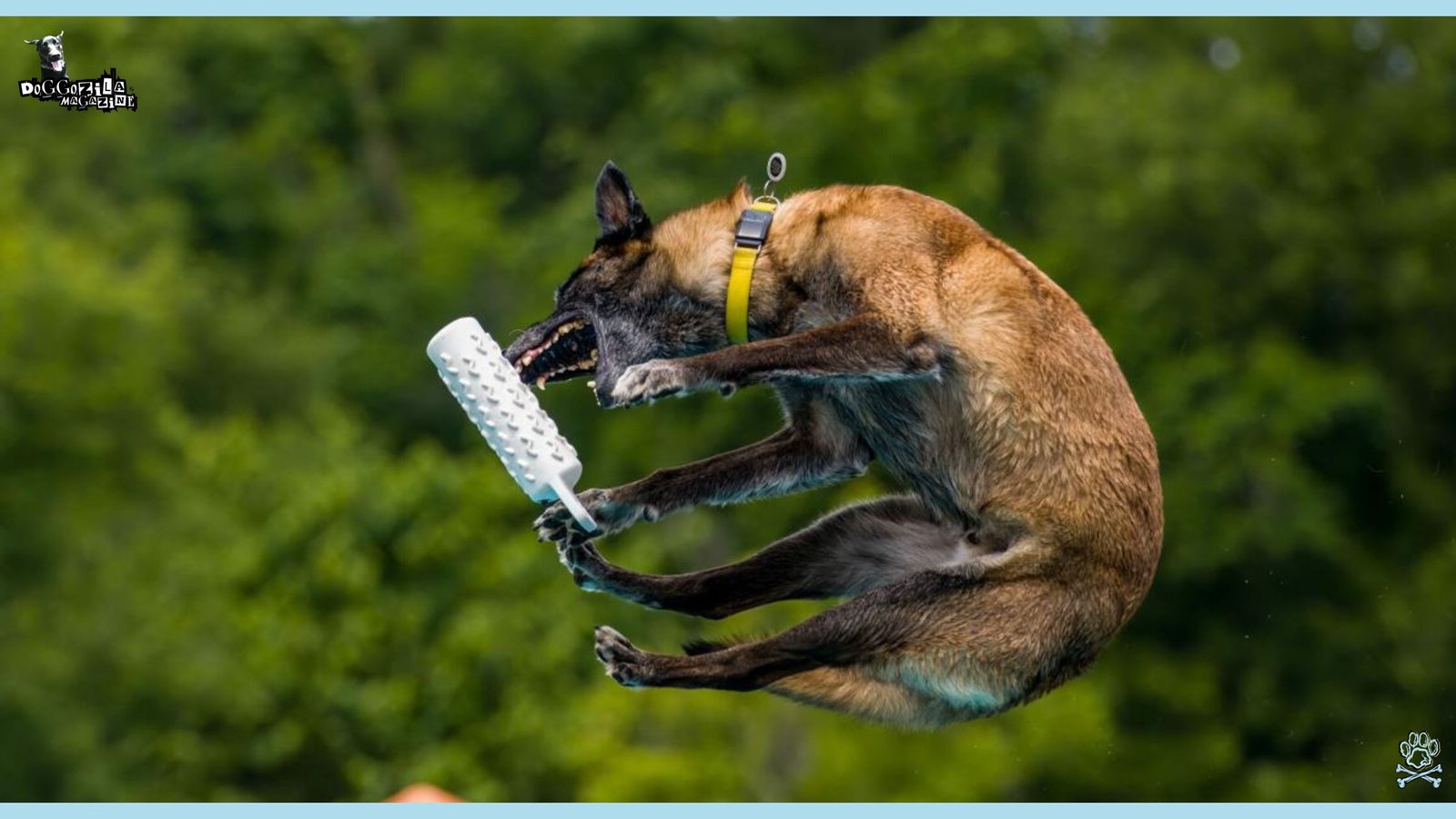
LEGENDARY LEAPERS: STORIES THAT INSPIRE
Every dock has its heroes. Like Titan, a senior Labrador who took up diving at age 9, proving age is no barrier. Or Misfit the Whippet, rescued from a shelter, who became a 2025 AKC silver medalist with a 32-foot personal best. Then there’s Scooter, the original 1998 champion whose 20-foot leap ignited a global craze.
Safety Gear No Competitor Should Skip
- Life jackets: Essential for brachycephalic dog breeds or novice swimmers, ensure a snug fit with handle tops for rescues.
- Quick-dry towels: Prevent ear infections by drying canals post-jump. Microfiber options like Ruffwear’s Dirtbag Towel absorb 5x their weight.
- Paw protectants: Docks heat up! Apply Musher’s Secret wax to prevent pad burns.
- Joint supplements: Vets recommend glucosamine/chondroitin blends to cushion repetitive impacts.
Injury Prevention: Keeping Your Athlete Sound For Every Dog Diving Competition
Common issues include shoulder strains, paw abrasions, and water aspiration.
Counter these with:
- Pre-jump warm-ups: 5-minute swims or dynamic stretches (paw raises, spinal twists).
- Cool-down routines: Post-event massage or cold therapy for legs.
- Surface checks: Inspect docks for splinters or slippery patches.
- Vet partnerships: Schedule gait analysis every 6 months to catch imbalances early.
Judging insights: How to maximize scores in your next dog diving competition
Judges assess:
- Takeoff: Clean dock exit without pawing the edge.
- Flight: Body position (tucked legs = better distance).
- Entry: Minimal splash, straight trajectory.
Avoid penalties by keeping leads off docks and throws within designated zones. If your dog drops the toy mid-air, distance still counts, encourage retrieval anyway for future motivation.
Beyond Distance: Exploring Dock Diving’s Diverse Disciplines
While “Big Air” (straight distance) gets glory, savvy competitors diversify.
2025’s AKC Military Challenge featured three thrilling formats:
- Extreme Vertical: The high jump spectacle: Dogs vault upward to snatch a bumper suspended 8+ feet off the water. Requires immense power and vertical spring, often dominated by Border Collies. Training uses “bumper machines” that gradually raise heights.
- Speed Retrieve: A race against the clock: Dogs dash down the dock to retrieve a toy from a 40-foot pool’s end. Times under 4 seconds win titles. Start by teaching explosive starts with a light-up target system.
- IronDog Challenges: Ultimate all-around dog diving competition tests: Combines Big Air, Speed Retrieve, and Extreme Vertical in one grueling event. Champions like 2025’s Nimona (All-American Dog) train with cross-discipline drills, balancing endurance and power.
Getting Started: Your Dog’s First Leap Awaits
Ready to soar?
Begin with backyard fun: toss floating toys into pools or lakes, rewarding every retrieve. Find local clubs via NADD.org for “try-it” days.
Essential pre-competition prep:
- Vet clearance: X-rays for joint health and exercise stress tests.
- Basic obedience: Reliable “stay,” “out,” and recall commands.
- Swim lessons: Ensure comfort in deep water, life jackets welcome!
- Community corner: Finding your tribe in the dog diving competition world: Join groups on social media or attend events as a volunteer. As Adriana Nottestad (2025 Lap division champ) says, “We celebrate every jump, every personal best. It’s not just competition, it’s family“.
- From splash to spotlight: Setting realistic goals for your dog diving competition journey: Track progress with apps like DockDogs Tracker.
Aim for incremental gains: 1–2 feet monthly. Celebrate milestones, a first 10-foot jump deserves a steak dinner! Remember that titles are fun, but the real win is watching your dog fly, tongue lolling, into happiness.
The dock awaits. Grab that slobbery toy, cheer till your throat burns, and let your dog show the world how incredible they truly are.
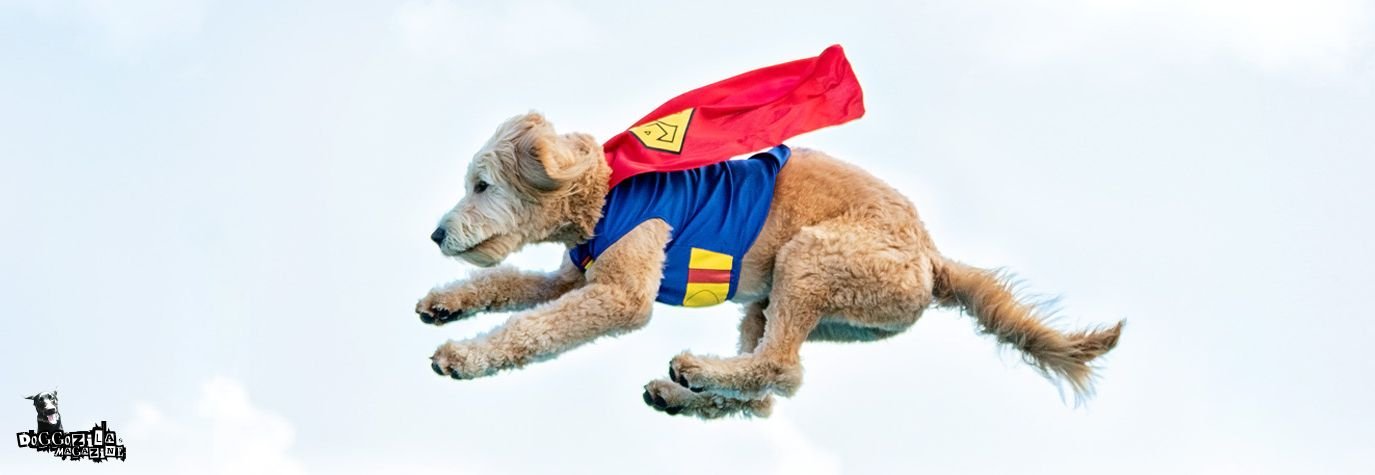
After all, in dock diving, every jump no matter the distance ends with a champion’s swim back to you.




